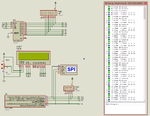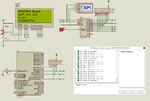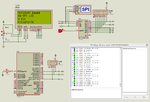milan.rajik
Banned
Why SPI Lcd not working. I am using Microchip 8 bit SPI Port expander. The SPI debugger shows that data is sent properly. I am testing it in both Proteus and hardware and it is not working in both. I am using Slaeae Logic Analyzer for testing in hardware. I am using EasyPIC v7 development board.
I am attaching my mikroC PRO PIC project and Proteus file. Proteus file is 8.2 SP2 format. The LCD code is fine because the same code works fine with I2C port expander.
broken link removed
I am attaching my mikroC PRO PIC project and Proteus file. Proteus file is 8.2 SP2 format. The LCD code is fine because the same code works fine with I2C port expander.
broken link removed
Attachments
Last edited by a moderator:


